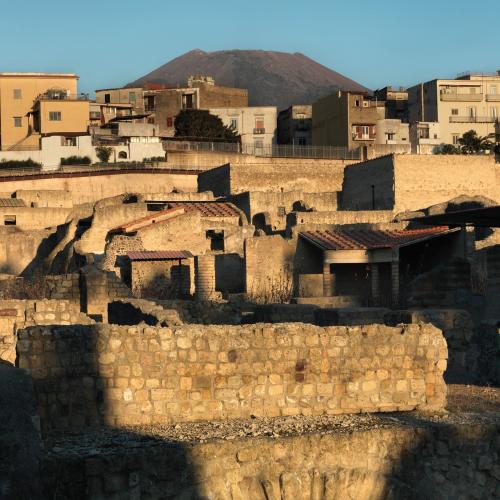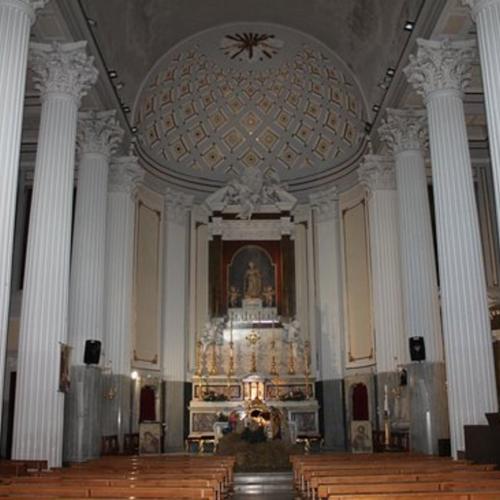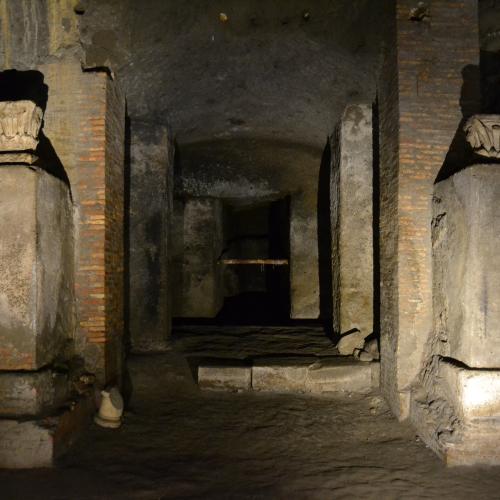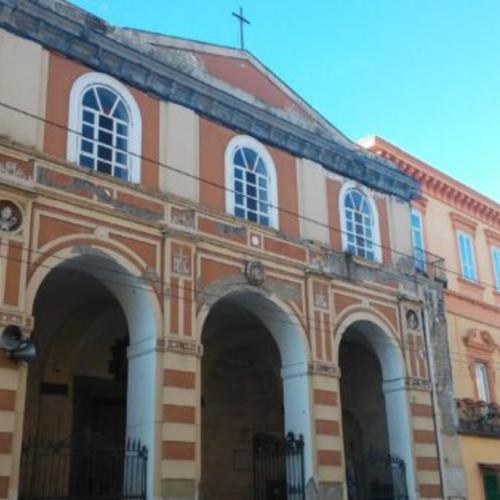Starting from the excavations, proceed northwards, stopping at the Ancient Theater, with an adjoining visit to the Parish of Santa Caterina and then to the & nbsp; Church of Santa Maria della Consolazione, bordering the Royal Palace of Portici. & nbsp;
Map
Lunghezza:
Tempo:
The absolute exceptionality of the site has also been recognized worldwide by UNESCO, in whose lists it has been included since 1997. The tour routes recount the life and final hours of a luxurious town in the shadow of Vesuvius, consigned to history by the eruption of 79 AD. Streets, houses, public spaces, wellness and baths, workshops and artisan activities, the sacred, are just some of the themes that are clearly perceived, in a unique visit, capable of offering an intimate and collected experience in the tangible and intangible cultural heritage.
ViewIt is located on Corso Resina opposite the entrance to the ancient theater of the excavations. Perhaps as early as the 14th century there was a chapel dedicated to the saint.
ViewCurrently located outside the Herculaneum Excavations, the theater, still embedded in the tufa bank, was excavated through a series of tunnels in the 18th century. The visit currently takes place through a series of flights of stairs and tunnels that allow visitors to see parts of the buried building, descending to the orchestra floor, paved in white marble. The stage space is largely occupied by two large 18th-century pylons built by Francesco La Vega for static reasons. The stage front features the royal door in the center, the two hospitales doors on either side, and four side niches, where statues recovered in the Prince d'Elboeuf's burrow excavations were originally placed, including those known as the Small and Great Herculaneum, now preserved in the Dresden Museum.
ViewThe first record of S. Maria della Consolazione, commonly known as the church of S. Agostino, dates back to 1613, a time when Count Scipione de Curtis donated a rustic estate to the Discalced Hermits of the order of S. Agostino to build a church there.
ViewAdditional information
Did you like it? Leave a review
Your opinion is important! It will be visible after approval by the editorial staff.
To post a comment you must be an authenticated user.







